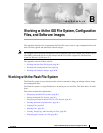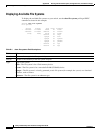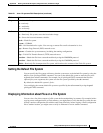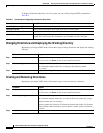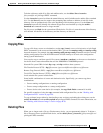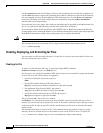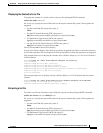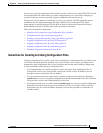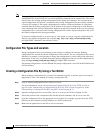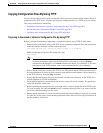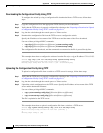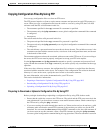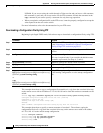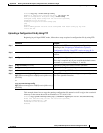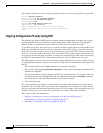
B-9
Catalyst 2950 Desktop Switch Software Configuration Guide
78-14982-01
Appendix B Working with the IOS File System, Configuration Files, and Software Images
Working with Configuration Files
You can copy (upload) configuration files from the switch to a file server by using TFTP, FTP, or RCP.
You might perform this task to back up a current configuration file to a server before changing its
contents so that you can later restore the original configuration file from the server.
The protocol you use depends on which type of server you are using. The FTP and RCP transport
mechanisms provide faster performance and more reliable delivery of data than TFTP. These
improvements are possible because FTP and RCP are built on and use the Transmission Control
Protocol/Internet Protocol (TCP/IP) stack, which is connection-oriented.
This section includes this information:
• Guidelines for Creating and Using Configuration Files, page B-9
• Configuration File Types and Location, page B-10
• Creating a Configuration File By Using a Text Editor, page B-10
• Copying Configuration Files By Using TFTP, page B-11
• Copying Configuration Files By Using FTP, page B-13
• Copying Configuration Files By Using RCP, page B-16
• Clearing Configuration Information, page B-19
Guidelines for Creating and Using Configuration Files
Creating configuration files can aid in your switch configuration. Configuration files can contain some
or all of the commands needed to configure one or more switches. For example, you might want to
download the same configuration file to several switches that have the same hardware configuration.
Use these guidelines when creating a configuration file:
• We recommend that you connect through the console port when using configuration files to
configure the switch. If you configure the switch from a Telnet session, IP addresses are not
changed, and ports and modules are not disabled.
• If no passwords have been set on the switch, you must set them on each switch by entering the
enable secret secret-password global configuration command. Enter a blank line for this command.
The password is saved in the configuration file as clear text.
• If passwords already exist, you cannot enter the enable secret secret-password global configuration
command in the file because the password verification will fail. If you enter a password in the
configuration file, the switch mistakenly attempts to execute the passwords as commands as it
executes the file.



